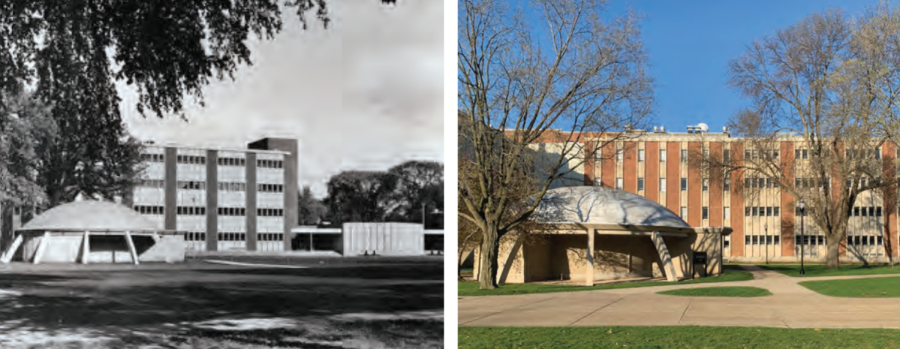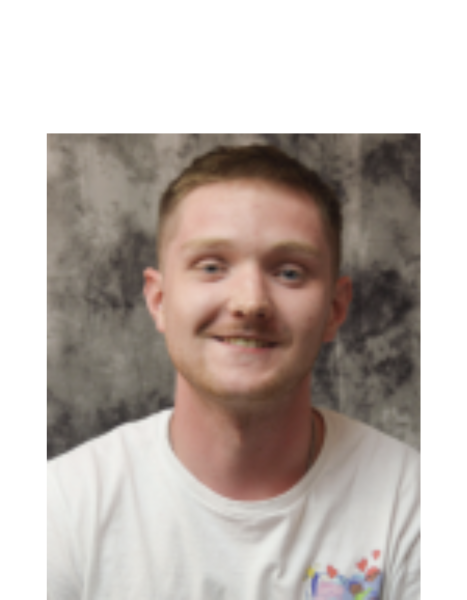Survey considers replacing Halsey
UWO Archives and Josh Lehner / Advance-Titan Halsey (right) has changed little since the 1970s (left). Professors who utilize the building have pointed to the fact that Halsey hasn’t kept up with science and technology. UWO computer science chair George Thomas said that a more modern, welcoming space with more lounges and study space will benefit students.
April 19, 2023
A survey was recently sent to students asking them their opinions on Halsey Science Center, as UW Oshkosh Chancellor Andrew Leavitt tasked a group with creating a document that makes the case for its replacement.
Students who utilize Halsey are encouraged to complete the survey, which can be found at https://bit.ly/41BCZ9P.
“The members of the Chancellor’s Science Building White Paper committee were charged to create a document demonstrating the limitations of the current Halsey Science Center and visioning the advantages to teaching, learning and research that could be provided in a new building,” the survey says.
Committee member and biology professor Robert Mitchell said a new building is needed because science has progressed in the 60 years since Halsey’s construction.
“Consider that Halsey was built only a decade after the structure of DNA was solved and still a decade before the first personal computer,” he said. “We now have entirely new fields like molecular biology, biotechnology and genomics, and modern research labs and teaching classrooms have very high technology and equipment demands that were not anticipated by the architects.”
Mitchell said that campus buildings aren’t simply classrooms and offices, and that they should include gathering spaces, studying areas and dining options — which are largely absent from the current building.
Chemistry department co-chair Kevin Crawford, who is also one of the committee members, emphasized the need for food and beverage options beyond vending machines, saying that a new building should be open for students to study and do group work, with faculty offices nearby.
“I think all academic buildings should be designed to help build connections between students and faculty,” he said. “Modern science research is not done alone in a lab, so our building should encourage coming together outside the classroom for learning and research. More open and welcoming spaces would help with retention and recruitment of students, too.”
Crawford said that a new building should also provide more flexibility in classrooms.
“Many of our current spaces in Halsey can only be used in one way,” he said. “The large lecture rooms have fixed seating on tiers. Modern large classroom spaces often have moveable furniture to allow the space to be used in several different ways, not just for traditional lectures.”
But Crawford said one of his concerns over a new building is sustainability, since Halsey is the second largest energy-consuming building on campus — next to the heating plant.
“That’s not unexpected since it is a science building, but we should have a goal of a very sustainability-minded construction process and energy efficient final building,” he said.
He also said he wants to ensure that money is allocated to update teaching and research equipment.
Halsey was named after Rufus Halsey, who served as school president from 1899 to 1907. The first sections of the building were constructed in 1963 to address the school’s growing curriculum. The building was expanded afterward, with the fourth and final section being finished in 1969.
A replacement to Halsey would be constructed within the next five to ten years.
All of the survey responses will be incorporated into a paper that will be finished in late May, Crawford said. It will then be used by Leavitt to lobby the UW System and the state to add the building project to the state’s list of capital projects.















